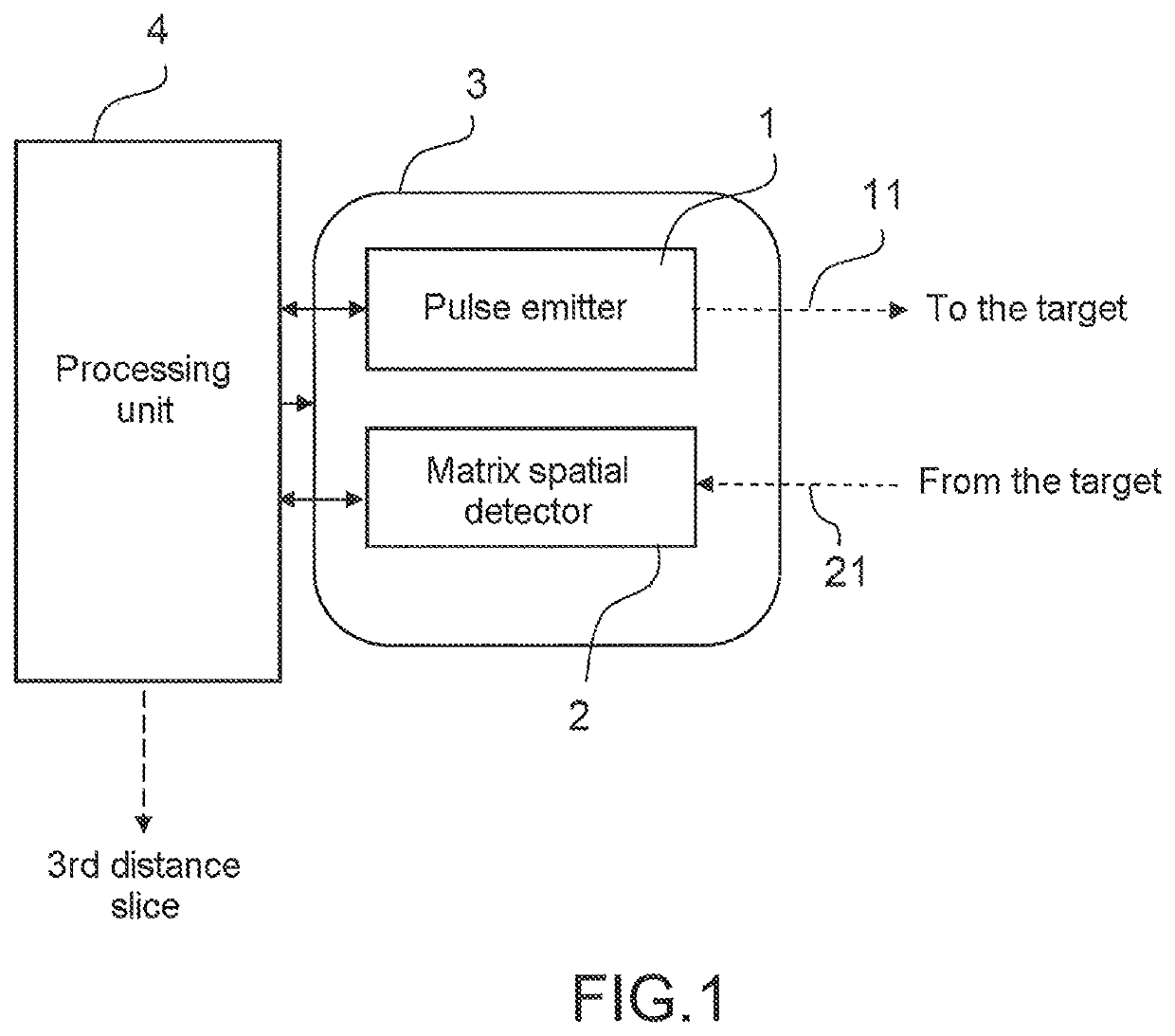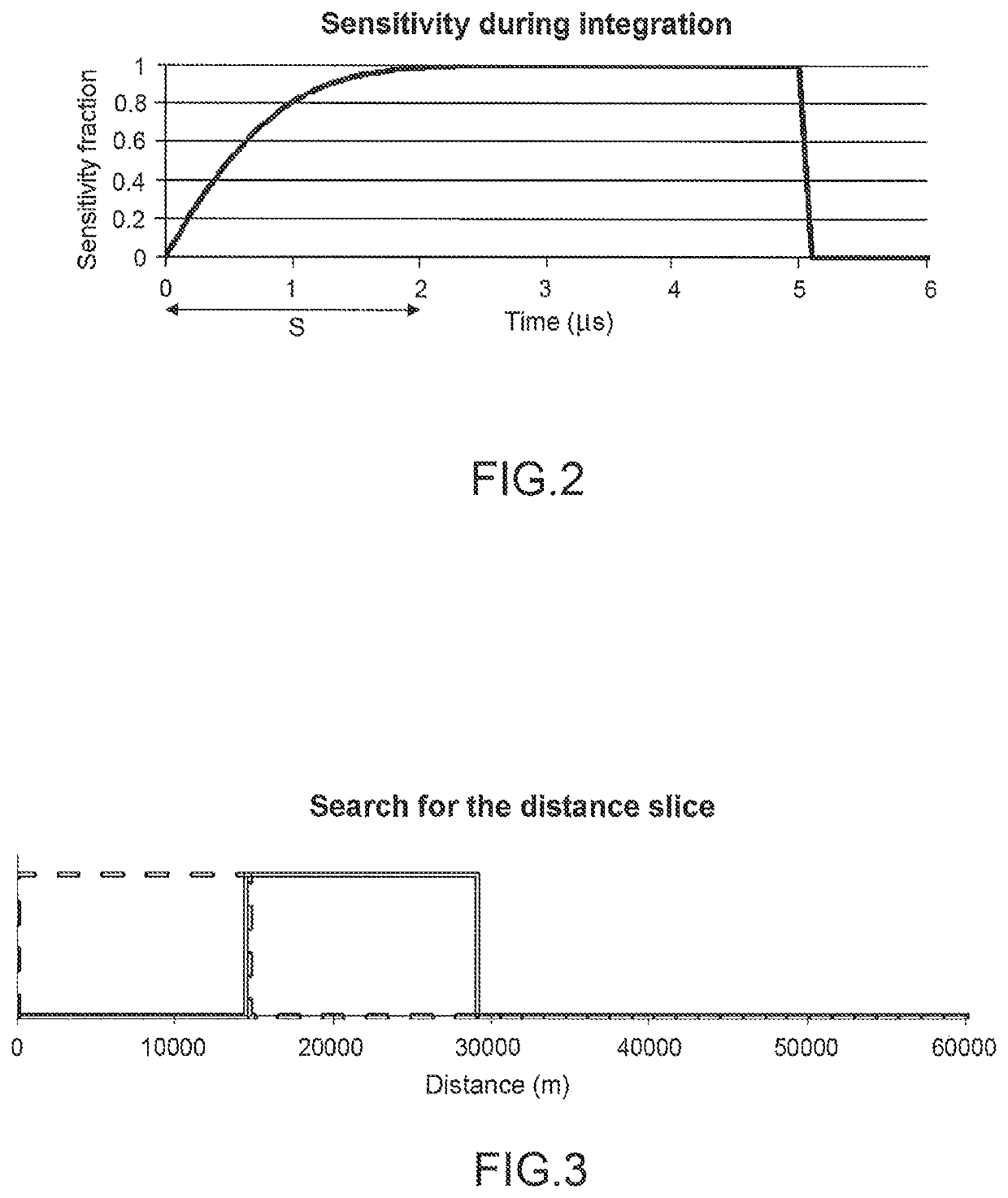Telemetry method and system using an imager
- Summary
- Abstract
- Description
- Claims
- Application Information
AI Technical Summary
Benefits of technology
Problems solved by technology
Method used
Image
Examples
Embodiment Construction
[0053]From figure to figure, the same elements are tagged by the same references.
[0054]The distance measuring system according to the invention described in conjunction with FIG. 1, comprises:
[0055]an emitter 1 of laser pulses 11,
[0056]a matrix detector 2 (also referred to as imager) allowing the spatial detection of the image 21 of the target in passive mode and / or of the echoes 21 of the target in active mode,
[0057]a spectral filter placed in front of the receiver and centered on the wavelength of the laser so as to reduce the daytime optical flux and favor the detection of the echoes; it is optionally retractable,
[0058]means 3 for orienting the emitter and the receiver in the direction of a target to be telemetered; the angular field in which the target lies is for example of the order of a milliradian,
[0059]a processing unit 4 connected to the emitter, to the detector and to the orientation means and able to implement the method described hereinafter.
[0060]The present invention ...
PUM
 Login to View More
Login to View More Abstract
Description
Claims
Application Information
 Login to View More
Login to View More - R&D
- Intellectual Property
- Life Sciences
- Materials
- Tech Scout
- Unparalleled Data Quality
- Higher Quality Content
- 60% Fewer Hallucinations
Browse by: Latest US Patents, China's latest patents, Technical Efficacy Thesaurus, Application Domain, Technology Topic, Popular Technical Reports.
© 2025 PatSnap. All rights reserved.Legal|Privacy policy|Modern Slavery Act Transparency Statement|Sitemap|About US| Contact US: help@patsnap.com



